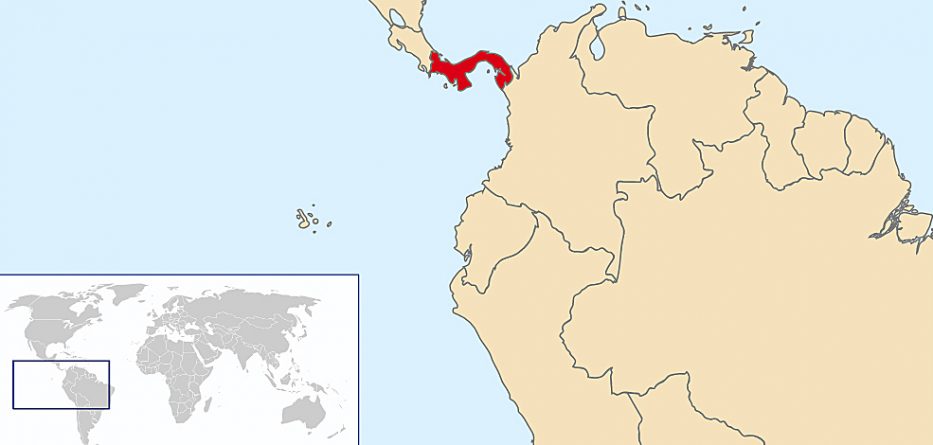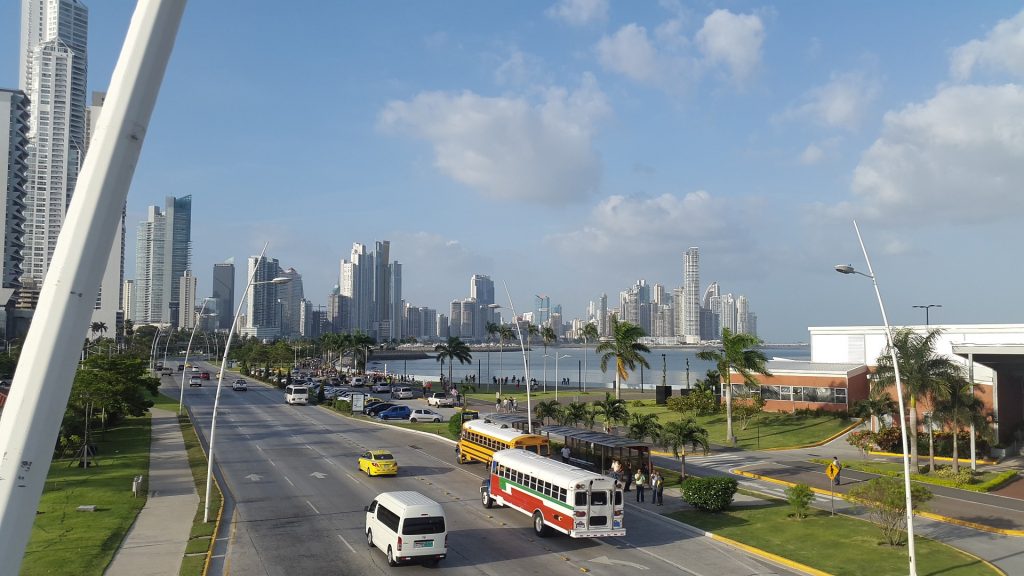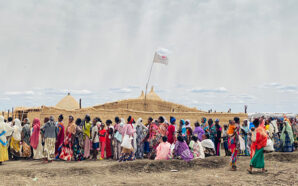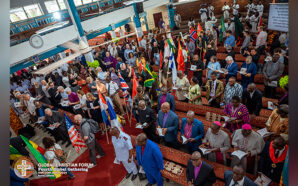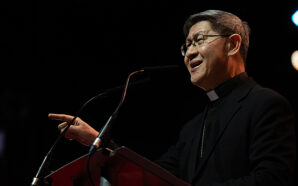As 171 pilgrims from the Diocese of Parramatta join thousands of other pilgrims from across the world for World Youth Day 2019 in Panama, Catholic Outlook will publish a series of features on the small Central American country.
Panama
Panama, officially called the Republic of Panama (Spanish: Republica de Panama), is a country in Central America, bordered by Costa Rica to the west, Colombia to the south east, the Caribbean Sea to the north and the Pacific Ocean to the south. The capital and largest city is Panama City, whose metropolitan area is home to nearly half of the country’s 3.8 million people.
The origin of the name Panama is unknown. One theory is that the country is named after a commonly found species of tree (Sterculia apetala, the Panama tree). Another is that when the first settlers arrived in Panama in August, when butterflies were abound, the name Panama meant “many butterflies” in one or several indigenous languages that were spoken in the territory before Spanish colonisation.
The most scientifically corroborated theory, that by Panamanian linguists, states that the world is a Hispanicisation of the Kuna language word ‘bannaba’ which means ‘distant’ or ‘far away’. A commonly relayed legend in Panama is that there was a fishing village, whose location is unspecified, that bore the name Panama which purportedly meant ‘an abundance of fish’, when the Spanish colonisers first landed in the area.
The official definition and origin of the name as promoted by Panama’s Ministry of Education is the “abundance of fish, trees and butterflies.”
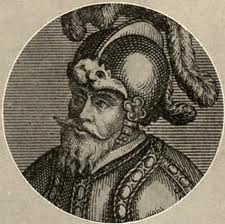
Rodrigo de Bastidas became the first European to explore the isthmus of Panama. Image: Wikimedia Commons.
Panama was inhabited by indigenous tribes before Spanish colonists arrived in the 16th century. Rodrigo de Bastidas sailed westward from Venezuela in 1501 in search of gold and became the first European to explore the isthmus of Panama. A year later, Christopher Colombus visited the isthmus, and established a short-lived settlement in the Darien province. Panama quickly became the crossroads and marketplace of Spain’s empire in the New World. Gold and silver were brought by ship from South America, hauled across the isthmus, and loaded aboard ships for Spain.
Panama was under Spanish rule for almost 300 years (1538 – 1821), and became part of the Viceroyalty of Peru, along with all other Spanish possessions in South America. In 1538 the Real Audiencia (a judicial district) of Panama was established, initially with jurisdiction from Nicaragua to Cape Horn, until the conquest of Peru.
Panama City’s plans for independence were accelerated by the unilateral Grito de la Villa de Los Santos (Cry from the Town of Saints), issued on November 10, 1821, by the residents of the Azuero region without backing from Panama City to declare their separation from the Spanish Empire. Those in the capital region regarded the Azueran movement with contempt, since the separatists in Panama City believed that their counterparts in Azuero were fighting not just for independence from Spain, but also for their right to self-rule apart from Panama City once the Spaniards were gone.
In October 1821, Colonel Jose Pedro Antionio de Fabrega y de las Cuevas, a staunch loyalist, was converted to the separatist side. By November 10, Fabrega was a supporter of the independence movement. Soon after the separatist declaration of Los Santos, Fabrega convened every organisation in the capital with separatist interests and formally declared the city’s support for independence.
In the first 80 years following independence from Spain, Panama voluntarily joined the Republic of Gran Colombia, a union of Nueva Granada, Ecuador and Venezuela. After Gran Colombia dissolved in 1831, Panama and Nueva Granada eventually became the Republic of Colombia.
When the Senate of Colombia rejected the Hay-Herran Treaty, which would have allowed the United States a renewable lease of 100 years on a six-mile strip across the isthmus of Panama, on January 22, 1903, the United States decided to support and encourage the Panamanian separatist movement.
In November 1903, Panama proclaimed its independence, and concluded the Hay-Bunau-Varilla Treaty with the United States, which granted rights to the United States “as if it were sovereign” in a zone roughly 16km wide and 80km long, in which the Panama Canal would be built between 1904 and 1914.
On June 6, 1987, the recently retired Colonel Roberto Diaz Herrera, resentful that General Manuel Antonio Noriega changed the plan of succession that would have seen him before chief of the military, decided to denounce Noriega’s regime. On the night of June 9, 1987, the Cruzada Civilista (“Civic Crusade”) was created and began organising actions of civil disobedience. The Crusade called for a general strike. In response, the military suspended constitutional rights and declared a state of emergency in the country. On July 10, the Crusade called for a massive demonstration that was violently repressed by the ‘Dobermans’, the military’s special riot control unit. That day, later known as El Viernes Negro (“Black Friday”), left six hundred people injured and another six hundred people detained.
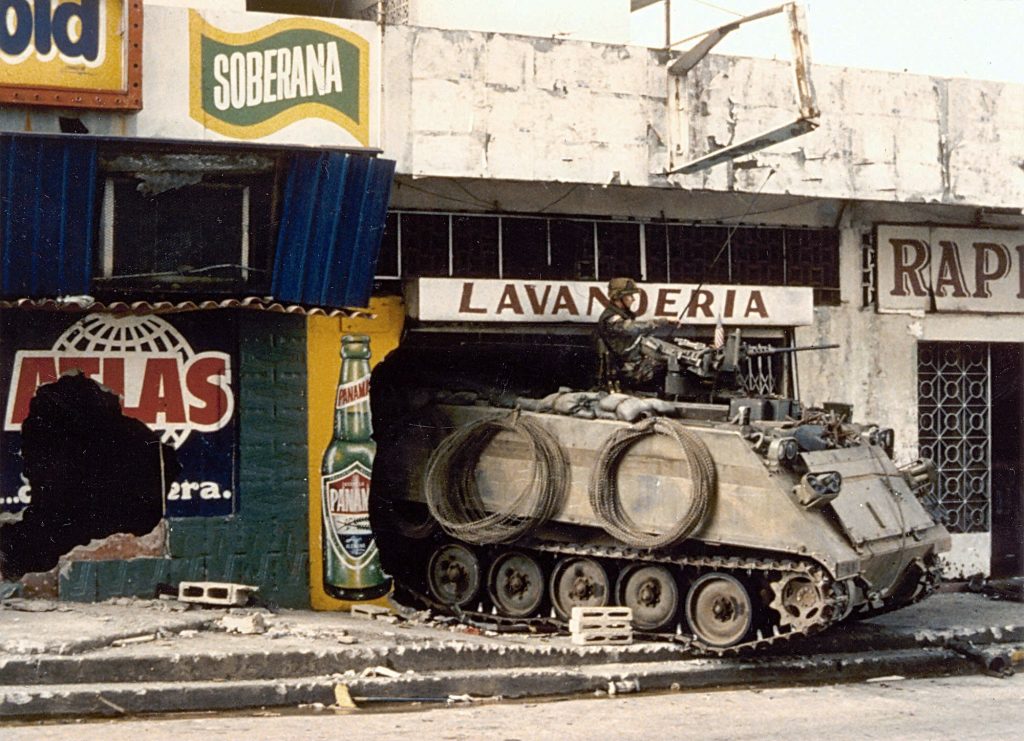
A U.S. Army M113 armored personnel carrier guards a street near the destroyed Panamanian Defense Force headquarters building during the second day of Operation Just Cause in 1989. Image: US Department of Defence/Wikimedia Commons.
United States President Ronald Reagan began a series of sanctions against the military regime. The United States froze economic and military assistance to Panama in the middle of 1987 in response to the domestic political crisis in Panama and an attack on the US embassy. In April 1988, President Reagan invoked the International Emergency Economic Powers Act, freezing Panamanian government assets in all US organisations.
On December 20, 1989, the United States began Operation Just Cause, which President George HW Bush said was “necessary to safeguard the lives of US citizens in Panama, defend democracy and human rights, combat drug trafficking, and secure the neutrality of the Panama Canal as required by the Torrijos-Carter Treaties”. Described as a surgical manoeuvre, the action led to estimates of civilian death from 200 to 4,000 during the two weeks of armed activities.
Since the end of Manuel Noriega’s military dictatorship in 1989, Panama has successfully completed five peaceful transfers of power to opposing political factions.
On September 1, 1999, Mireya Moscoso, the widow of former President Arnulfo Arias Madrid, took office following a free and fair election. During her administration, Moscoso attempted to strengthen social programs, especially for child and youth development, protection and general welfare. Moscoso’s administration successfully handled the Panama Canal transfer and was effective in the administration of the Canal.
On May 4, 2014, current president Juan Carlos Varela won the presidential election with over 39 percent of the votes and was sworn in on July 1, 2014.
The dominant feature of Panama’s geography is the central spine of mountains and hills that forms the continental divide. The divide doesn’t form part of the great mountain chains of North America, and only near the Colombian border are there highlands related to the Andean system of South America. The spine that forms the divide is the highly eroded arch of an uplift from the sea bottom, in which peaks were formed by volcanic intrusions. The highest point in the country is the Volcan Baru, which rises to 3,475 metes.
Covering around 40 percent of its land area, Panama’s jungles are home to an abundance of tropical plants and animals – some of them found nowhere else on the planet. Nearly 500 rivers lace Panama’s rugged landscape. Many originate as swift highland streams, meander in valleys and form coastal deltas. However the Rio Chagres, located in central Panama, is one of the few wide rivers and a source of hydroelectric power.
Panama has a tropical climate, throughout the year in the lowlands and temperate climate in the highlands. Temperatures on the Pacific side of the isthmus are somewhat lower than on the Caribbean, and breezes tend to rise after dusk in most parts of the country. At sea level the average annual temperature is 27°C. Panama has two seasons – dry from December to April and wet from May to November.
The Panamanian currency is officially the balboa, fixed at a rate of 1:1 with the United States dollar since Panamanian independence in 1903. In practice, Panama is dollarsied: US dollars are legal tender and used for all paper currency, while Panama has its own coinage.
Spanish is the official and dominate language of Panama. The Spanish spoken in Panama is known as Panamanian Spanish. About 93 per cent of the population speak Spanish as their first language. Statistics from the United States Central Intelligence Agency show that as a second language, English is spoken by 10 per cent, French by four per cent and Arabic by one per cent.
The government of Panama doesn’t collect statistics on the religious affiliation of citizen, but various sources estimate that between 75-85 per cent of the population identifies itself as Roman Catholic, and 15-25 per cent as Protestant.
The culture of Panama derives from European music, art and traditions brought by the Spanish to Panama. Hegemonic forces have created hybrid forms blending African and North American culture with European culture.
Since Panama’s cultural heritage is influenced by many ethnicities, the traditional cuisine of the country includes ingredients from many cultures from all over the world: a mix of African, Spanish, North American techniques, dishes and ingredients, reflecting its diverse population.
Baseball is Panama’s national sport, and the country has regional teams and a national team that represents it in international events. At least 140 Panamanian players have played professional baseball in the United States, more than any other Central American country. In boxing, four Panamanians are in the International Boxing Hall of Fame. Since the end of the 20th century, football (soccer) has become more popular in Panama. The top tier of domestic Panamanian football, Liga Panamena de Futbol, was founded in 1988. The national team appeared at the FIFA World Cup for the first time in 2018, appearing in group G, facing Belgium, England and Tunisia. Basketball is also popular in Panama. There are regional teams as well as a squad that competes internationally. Other popular sports include volleyball, taekwondo, golf and tennis.

Members of the Panamanian national football team at the 2018 FIFA World Cup in Russia. Image: Wikimedia Commons.
For more information on the Diocese of Parramatta’s pilgrimage to World Youth Day 2019 in Panama, please visit parrawyd.org
Source: Wikipedia, Visit Panama and the US CIA World Factbook.




